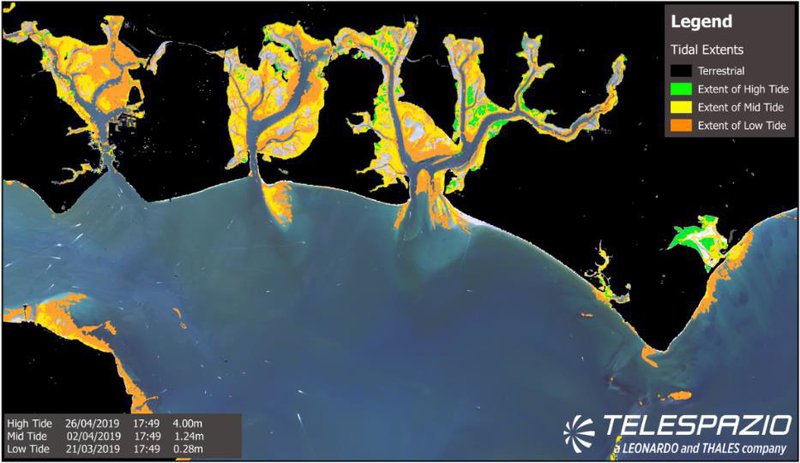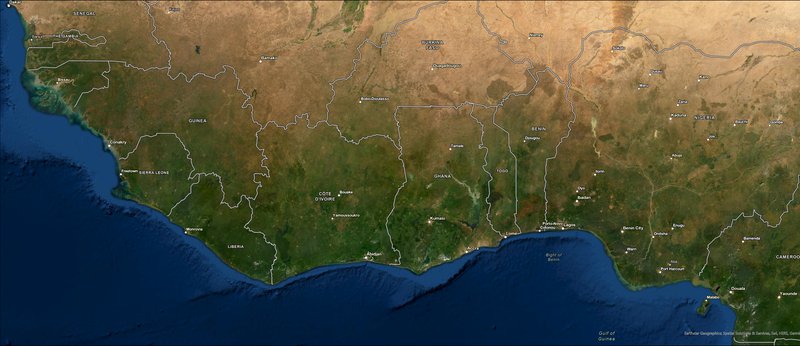Communities at coasts and major cities around the world are already feeling the effects of climate change, but can better access to climate information help us avoid some of its worst impacts?
To explore this question, the European Space Agency has teamed up with Future Earth to support teams of researchers to engage with local stakeholders to understand the climate adaption challenges they face, exploring how satellite-based datasets combined with other sources of information can inform their decisions.
Four projects have been selected to develop online demonstration tools that tackle the threats posed by increasingly frequent cholera outbreaks, storm damage and flooding, and extremes of urban heat.
“We aim to highlight the value of Earth observation for developing adaptation measures to climate change,” says Susanne Mecklenburg, who is head of ESA’s Climate Office. “The long-term datasets for key climate variables produced under ESA’s Climate Change Initiative (CCI) can enhance our understanding of how climate impacts are evolving in different regional contexts. With these projects we aim to bring the latest satellite-based climate data and analysis techniques closer to decision-makers, to co-develop tools for interpreting data to get the information they need.”
The projects are consulting with users and scientists across the Future Earth networks to develop the tools by September 2021, and the tools will be showcased at the UNFCCC COP-26 meeting in November 2021 in Glasgow, UK.
Cholera outbreaks under a warming climate
Cholera is a waterborne disease affecting 1.3 to 4 million people each year worldwide, with up to 143,000 reported fatalities. Global warming and an increase in extreme weather events - such as droughts, floods, storm surges and heat waves - drives pathogen emergence and associated disease outbreaks.
The highest incidence of the disease is reported in highly-populated coastal regions, connected with enhanced pollution of water bodies and food sources. The responsible pathogen, the bacterium Vibrio cholerae, is harboured by plankton and detritus in the water, and survives transport by ocean currents.
“There is an important need to develop easily-accessed tools that coastal communities and health officials can use to implement preventative measures and so reduce risk for human health,” says Marie-Fanny Racault, who is based at Plymouth Marine Laboratory in the UK and is leading the PODCAST-DEMO project.
The project is conducted by an international team of researchers from UK, India and Japan, working with coastal communities and health authorities, with advice from researchers in Future Earth Coasts and the Health Knowledge Action Network, to create a web-based visualisation and analysis tool for climate-driven hotspots of Vibrio cholerae in the northern Indian Ocean. It will provide maps of environmental, climate, and health-related information, modelled from systematic observations of key climate indicators from the ESA Climate Change Initiative (CCI), in-situ and clinical data from publicly available archives.

Coastal management under extreme storms
Global sea levels have risen by about 20cm since 1901, driven by melting ice sheets and glaciers and warming oceans under climate change. On the Australian Gold Coast, storms now frequently flood streets and houses and erode the beaches that provide a natural protective barrier for coastal inhabitants.
“Understanding the dynamics of climate change at the land-sea interface and developing adaptation strategies that do not rely on hard engineering represents a significant challenge for coastal towns, cities and communities across the world,” says Andrew Iwanoczko, Head of Geo Information Marketing and Sales at Telespazio UK, which is leading the Post-Storm Beach Recovery Project.

By using remotely sensed Earth observation data, the project will address critical data gaps along the Gold Coast. Copernicus Sentinel-1 satellite data and ESA CCI Sea State information shall be used to derive time series tidal information and reference these against observations of storm events and calm conditions. The aim being to investigate and understand the relationship between wave height, length, and propagation, and net erosion and accretion, and begin to anticipate how this may evolve through a changing climate scenario.
Rodger Tomlinson, Director of The Griffith Centre for Coastal Management, a world leader in coastal management and Future Earth Coasts partner on the project, says the demonstrator will significantly advance their work on analysing climate change impacts on coastlines “towards transformative results that will have potential global applicability”. The project kicked off at the start of July 2020 and will be completed by the end of February 2021.
Enhancing adaptation and resilience along West Africa’s coasts
Communities along the West Coast of Africa face multiple hazards made worse by climate change, including coastal erosion, storm-surge flooding and pollution events.
A group of early-career researchers in the Future Earth’s Ocean Knowledge Action Network are leading the Enhancing Adaptation and Resilience Against Multi-hazards along West Africa’s Coasts (EARWAC) project, which aims to assess coastal vulnerability and at-risk locations, providing hazard early warnings on a seasonal basis.
The project is working with a range of stakeholders to co-design and develop a dashboard “to improve response coordination and decision making of local and regional authorities, and self-preparedness and anticipation of at-risk communities," says Oghenekevwe Oghenechovwen, of Sixth Avis Ltd, Nigeria, the Project Lead.The Sixth Avis Ltd is a geospatial and data analytics company that works with businesses and other institutional entities to help solve some of the most difficult sustainability problems.
EARWAC is also supported by Future Earth Coasts, and advised by local network members.

Ecosystem services for climate-resilient city planning
Green and blue spaces in urban areas can ameliorate the negative impacts of climate change, such as flooding and extreme urban heat, and benefit human health by improving air quality and reducing traffic noise.
The City Explorer tool is an interactive planning support tool, which will take into account spatial patterns in socio-demographic demand for ecosystem services and will calculate ecosystem service metrics that reflect local context. The tool will map the expected benefits of multiple ecosystem services associated with urban green and blue space, and allow users to add new greenspace into a city environment, to compare the relative benefits of different locations. Vulnerability of city inhabitants, and importance of the service provided, can be used to weight the final output, allowing users to identify optimal spatial configurations, tailored to the specific requirements of the city or region being assessed.
The project is led by early-career researcher David Fletcher, who is based at the UK Centre for Ecology and Hydrology, and is supported by Future Earth’s Urban and Health Knowledge Action Networks.
ESA-Future Earth Joint Programme
All four demonstrator projects are funded by the ESA-Future Earth Joint Programme, which facilitates the development and uptake of Earth observation data by Future Earth’s research networks. The programme stimulates new collaborations around the climate datasets provided under ESA’s Climate Change Initiative (CCI). Under CCI, ESA has developed a suite of 23 Essential Climate Variable data products in response to the UNFCCC’s need for systematic observations of the climate system.
The CCI's free and open access products merge data from multiple satellites and sensors to create long time-series of climate data, which are as stable and consistent as possible and suitable for a range of climate research applications.

